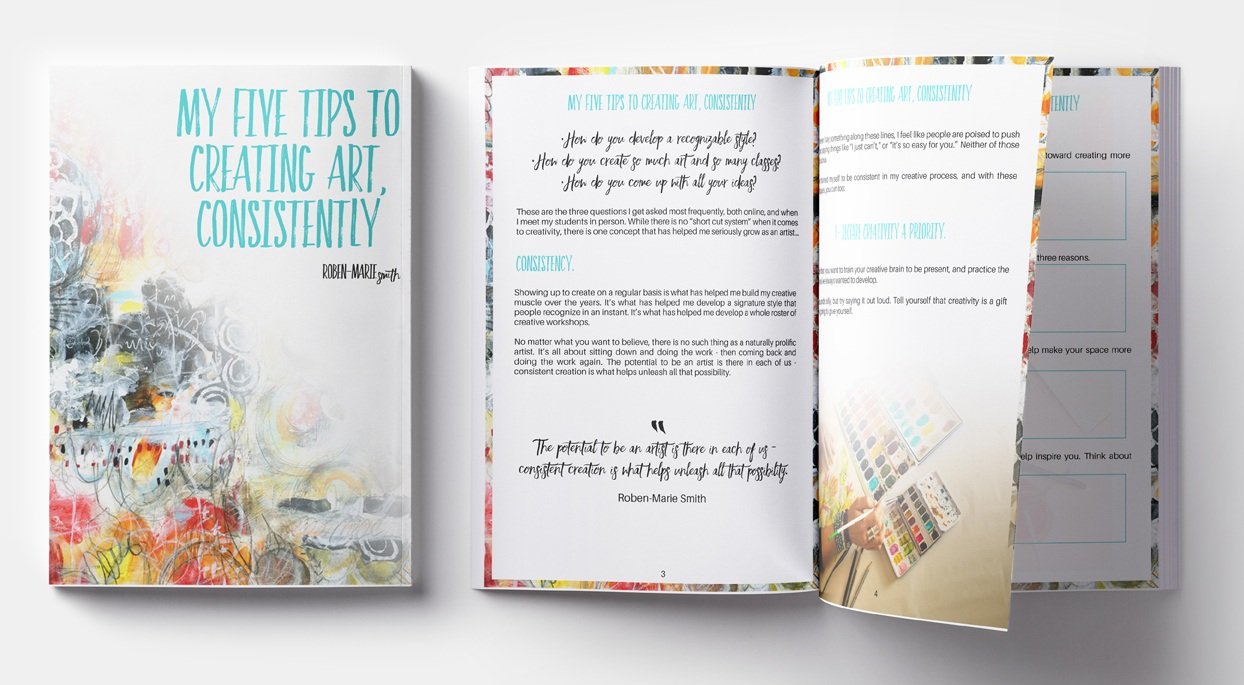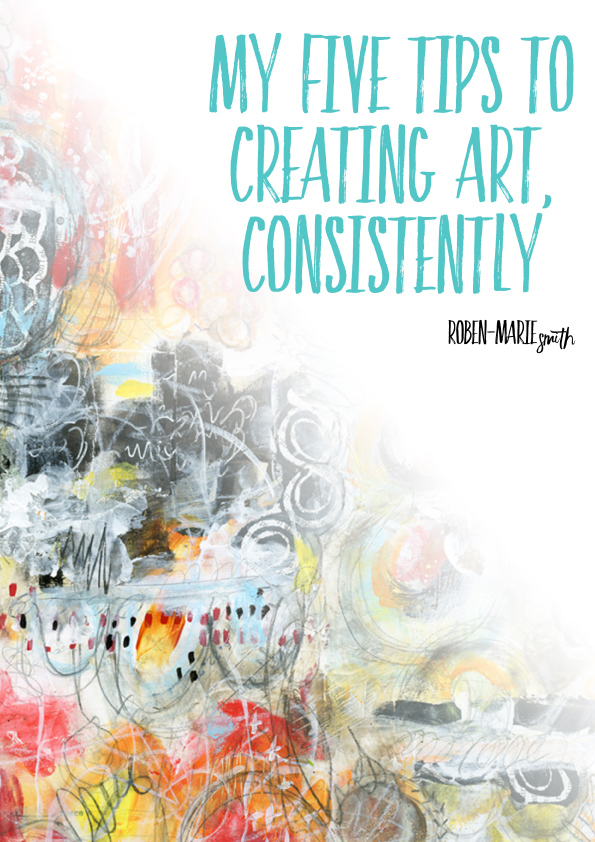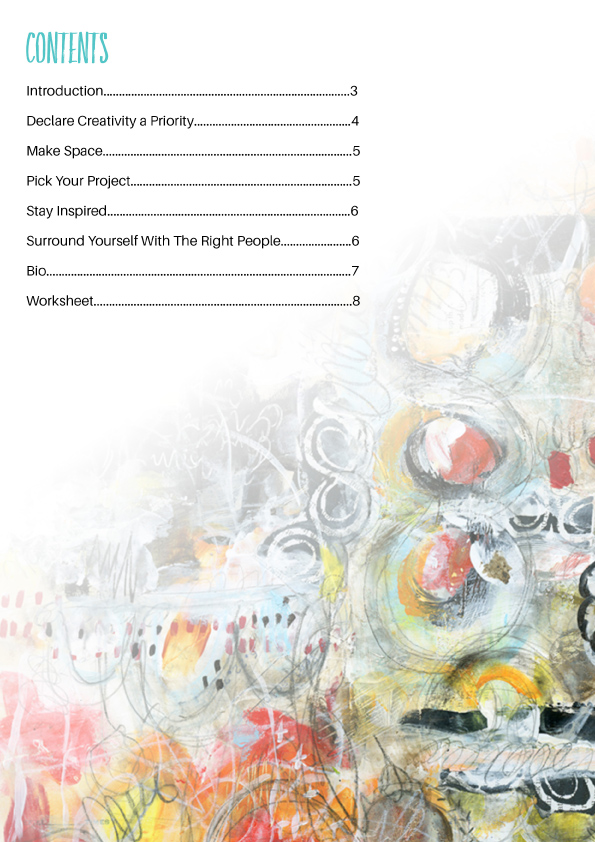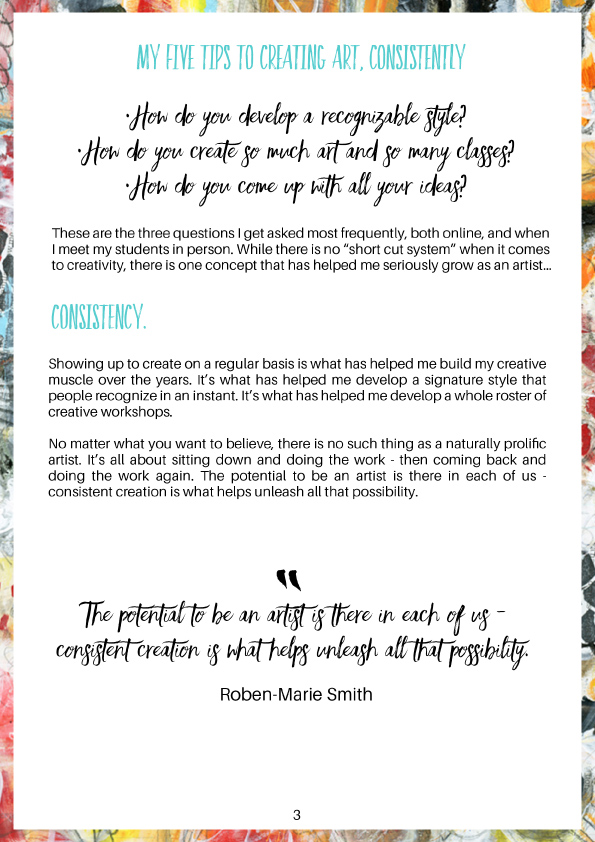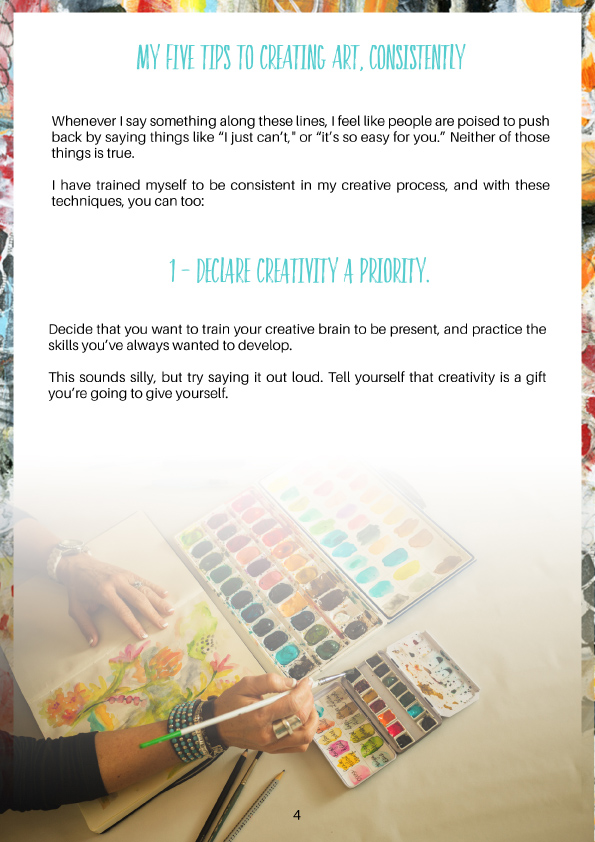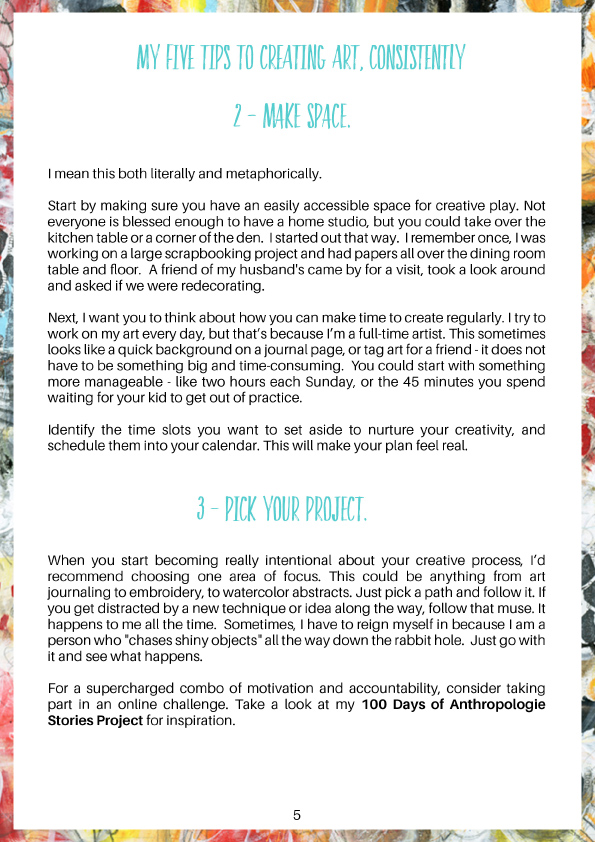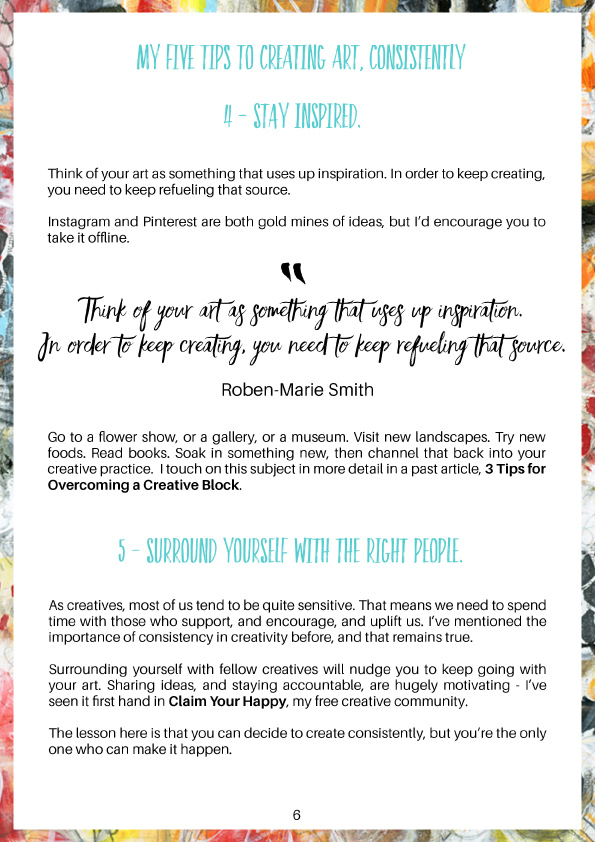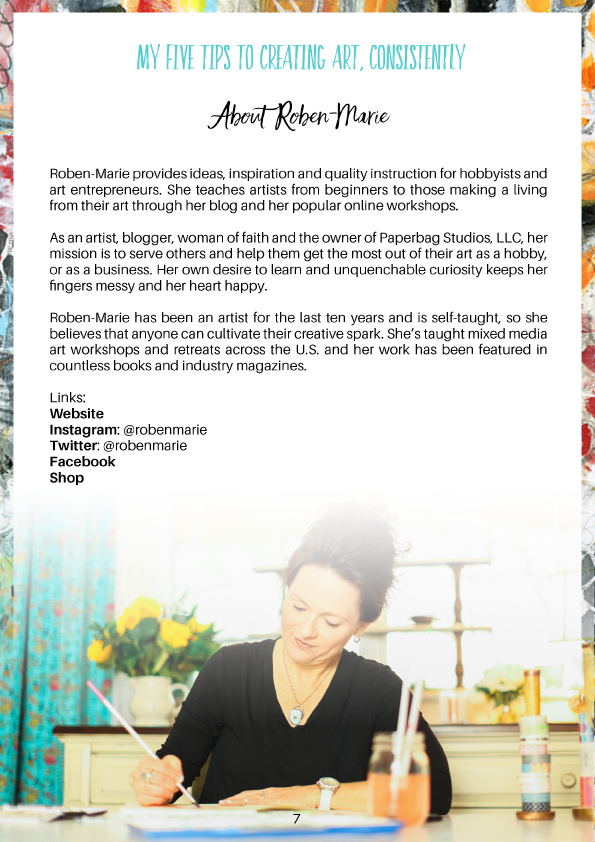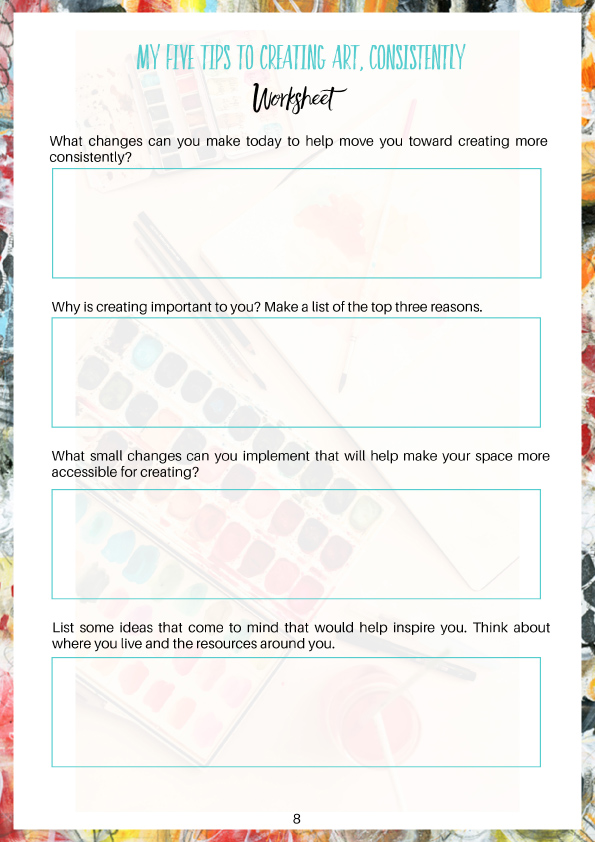My five tips to creating art, consistently
•How do you develop a recognizable style?
•How do you create so much art and so many classes?
•How do you come up with all your ideas?
These are the three questions I get asked most frequently, both online, and when I meet my students in person. While there is no “short cut system” when it comes to creativity, there is one concept that has helped me seriously grow as an artist…
Consistency.
Showing up to create on a regular basis is what has helped me build my creative muscle over the years. It’s what has helped me develop a signature style that people recognize in an instant. It’s what has helped me develop a whole roster of creative workshops.
No matter what you want to believe, there is no such thing as a naturally prolific artist. It’s all about sitting down and doing the work - then coming back and doing the work again. The potential to be an artist is there in each of us - consistent creation is what helps unleash all that possibility.
“The potential to be an artist is there in each of us - consistent creation is what helps unleash all that possibility.”
Whenever I say something along these lines, I feel like people are poised to push back by saying things like “I just can’t," or “it’s so easy for you.” Neither of those things is true.
I have trained myself to be consistent in my creative process, and with these techniques, you can too:
1 - Declare creativity a priority.
Decide that you want to train your creative brain to be present, and practice the skills you’ve always wanted to develop.
This sounds silly, but try saying it out loud. Tell yourself that creativity is a gift you’re going to give yourself.
2 - Make space.
I mean this both literally and metaphorically.
Start by making sure you have an easily accessible space for creative play. Not everyone is blessed enough to have a home studio, but you could take over the kitchen table or a corner of the den. I started out that way. I remember once, I was working on a large scrapbooking project and had papers all over the dining room table and floor. A friend of my husband's came by for a visit, took a look around and asked if we were redecorating.
Next, I want you to think about how you can make time to create regularly. I try to work on my art every day, but that’s because I’m a full-time artist. This sometimes looks like a quick background on a journal page, or tag art for a friend - it does not have to be something big and time-consuming. You could start with something more manageable - like two hours each Sunday, or the 45 minutes you spend waiting for your kid to get out of practice.
Identify the time slots you want to set aside to nurture your creativity, and schedule them into your calendar. This will make your plan feel real.
3 - Pick your project.
When you start becoming really intentional about your creative process, I’d recommend choosing one area of focus. This could be anything from art journaling to embroidery, to watercolor abstracts. Just pick a path and follow it. If you get distracted by a new technique or idea along the way, follow that muse. It happens to me all the time. Sometimes, I have to reign myself in because I am a person who "chases shiny objects" all the way down the rabbit hole. Just go with it and see what happens.
For a supercharged combo of motivation and accountability, consider taking part in an online challenge. Take a look at my 100 Days of Anthropologie Stories Project for inspiration.
4 - Stay inspired.
Think of your art as something that uses up inspiration. In order to keep creating, you need to keep refueling that source.
Instagram and Pinterest are both gold mines of ideas, but I’d encourage you to take it offline.
“Think of your art as something that uses up inspiration. In order to keep creating, you need to keep refueling that source.”
Go to a flower show, or a gallery, or a museum. Visit new landscapes. Try new foods. Read books. Soak in something new, then channel that back into your creative practice. I touch on this subject in more detail in a past article, 3 Tips for Overcoming a Creative Block.
5 - Surround yourself with the right people.
As creatives, most of us tend to be quite sensitive. That means we need to spend time with those who support, and encourage, and uplift us. I’ve mentioned the importance of consistency in creativity before, and that remains true.
Surrounding yourself with fellow creatives will nudge you to keep going with your art. Sharing ideas, and staying accountable, are hugely motivating.
The lesson here is that you can decide to create consistently, but you’re the only one who can make it happen.
What do you say? Are you ready to choose creativity?
Sending love your way today!
Roben-Marie




